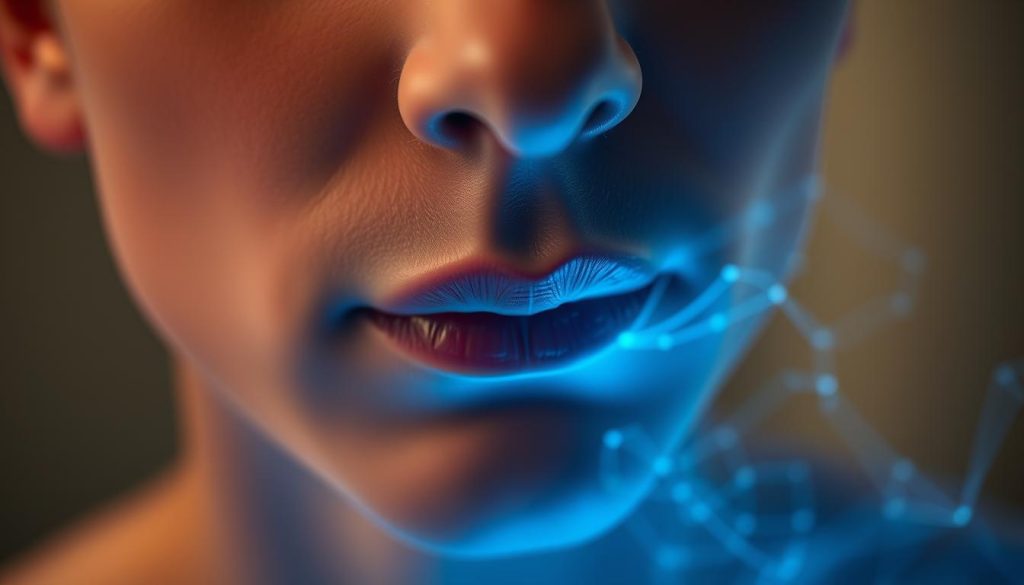In today’s fast-paced world, many people are seeking natural ways to improve their mood and overall mental well-being. While there are various approaches to achieving emotional balance, one lesser-known secret lies in the power of negative ions. These invisible particles, found abundantly in nature, have been garnering attention for their potential to positively impact our emotional health.
As we navigate the challenges of modern life, it’s essential to explore natural mood boosters that can help us maintain a sense of well-being. Negative ions have emerged as a promising solution, with a growing body of research suggesting their ability to enhance mood and promote relaxation. In this article, we’ll dive into the science behind negative ions and uncover how they can be harnessed to support our mental well-being.
What Are Negative Ions and How Do They Work?
Negative ions, also known as air ions, are tiny molecules that carry a negative electrical charge. These invisible particles are naturally abundant in certain environments, such as near waterfalls, beaches, and forests. But what exactly are negative ions, and how do they work?
Understanding the Science Behind Negative Ions
Negative ions are created when an atom or molecule gains an extra electron, resulting in a negative charge. In nature, this process occurs through various means, such as the movement of water, the friction of air against surfaces, and the effects of sunlight and radiation. When negative ions are present in the air, they can interact with the human body, potentially influencing mood and well-being.
The science behind negative ions suggests that they may have a positive impact on serotonin levels in the brain. Serotonin is a neurotransmitter that plays a crucial role in regulating mood, sleep, and appetite. Some studies have indicated that exposure to negative ions can increase serotonin production, leading to improved mood and reduced symptoms of depression and anxiety.
The Natural Sources of Negative Ions
Negative ions are abundant in nature, and certain environments are known for their high concentrations of these mood-boosting particles. Some of the most common natural sources of negative ions include:
- Waterfalls: The movement and crashing of water creates an abundance of negative ions in the surrounding air.
- Beaches: The combination of crashing waves, salt spray, and sunlight generates high levels of negative ions along coastlines.
- Forests: The dense vegetation, moist soil, and natural air circulation in forests contribute to elevated negative ion levels.
In addition to these natural sources, negative ions can also be generated through artificial means, such as negative ion generators and air purifiers. These devices work by releasing negative ions into the air, mimicking the beneficial effects found in nature.

The table below summarizes the main natural sources of negative ions and their potential benefits:
| Natural Source | Negative Ion Levels | Potential Benefits |
|---|---|---|
| Waterfalls | High | Improved mood, reduced stress |
| Beaches | High | Increased relaxation, better sleep |
| Forests | Moderate to High | Enhanced air quality, boosted immune system |
The Link Between Negative Ions and Mood Enhancement
Have you ever wondered why you feel so refreshed and energized after spending time in nature, especially near waterfalls, beaches, or forests? The secret may lie in the presence of negative ions, which have been linked to improved mood and emotional well-being. Let’s explore the fascinating research behind this connection and how negative ions can potentially alleviate symptoms of depression and anxiety.

Research Studies on Negative Ions and Emotional Well-being
Numerous studies have investigated the relationship between negative ions and mood enhancement. A notable study conducted by Columbia University found that exposure to high concentrations of negative ions resulted in a significant reduction in symptoms of seasonal affective disorder (SAD), a type of depression that occurs during specific seasons. Participants reported improved mood, increased energy levels, and better sleep quality after regular exposure to negative ions.
Another study published in the Journal of Alternative and Complementary Medicine revealed that negative ion therapy could be an effective complementary treatment for individuals with chronic depression. The researchers observed that patients who received negative ion treatment experienced a decrease in depressive symptoms and an overall improvement in their emotional well-being.
How Negative Ions Affect Serotonin Levels
Serotonin, often referred to as the “happy hormone,” plays a crucial role in regulating mood, sleep, appetite, and cognitive functions. Low serotonin levels have been associated with an increased risk of depression, anxiety, and other mood disorders. Interestingly, negative ions have been shown to influence serotonin levels in the brain.
When negative ions are inhaled, they stimulate the production and release of serotonin, leading to an elevated mood and a sense of calm. This mechanism is believed to be one of the primary ways in which negative ions contribute to emotional well-being. By increasing serotonin levels, negative ions may help alleviate symptoms of depression and anxiety, promoting a more balanced and positive emotional state.
Do Negative Ions Improve Mood? Exploring the Evidence
The potential of negative ions to enhance mood has been a topic of interest for researchers and individuals seeking natural ways to improve emotional well-being. While anecdotal reports suggest that exposure to negative ions can lead to mood improvement, it is essential to examine the scientific evidence and clinical trials to gain a more comprehensive understanding of their effects.
Several studies have investigated the link between negative ions and mood. A randomized controlled trial conducted by Perez et al. (2013) found that participants exposed to high concentrations of negative ions reported significant improvements in mood compared to those in a control group. The researchers attributed these effects to the potential influence of negative ions on serotonin levels, a neurotransmitter associated with mood regulation.
Another study by Goel et al. (2005) examined the impact of negative ion exposure on seasonal affective disorder (SAD), a condition characterized by mood disturbances during specific seasons. The results indicated that participants who received negative ion therapy experienced a significant reduction in SAD symptoms, suggesting a potential therapeutic application for mood disorders.
| Study | Sample Size | Duration | Results |
|---|---|---|---|
| Perez et al. (2013) | 80 participants | 4 weeks | Significant mood improvement in negative ion group |
| Goel et al. (2005) | 124 participants | 3 weeks | Reduction in SAD symptoms with negative ion therapy |
While these studies provide promising evidence, it is important to note that the body of research on negative ions and mood is still relatively limited. More extensive clinical trials and replication studies are needed to establish a strong causal relationship and determine the optimal conditions for mood enhancement.
In addition to scientific studies, anecdotal reports from individuals who have experienced the benefits of negative ions should not be disregarded. Many people report feeling more relaxed, energized, and positive after spending time in environments rich in negative ions, such as near waterfalls, beaches, or mountains. These subjective experiences, while not conclusive, contribute to the growing interest in exploring the potential of negative ions for mood improvement.
Harnessing the Power of Negative Ions in Your Daily Life
Incorporating negative ions into your daily routine can be a simple and effective way to potentially boost your mood and overall well-being. By engaging in activities that expose you to higher concentrations of negative ions and using devices that generate these beneficial particles, you can create an environment that promotes emotional balance and relaxation.
Incorporating Negative Ion-Generating Activities into Your Routine
One of the easiest ways to harness the power of negative ions is by spending time in nature. Engaging in regular nature walks, especially near waterfalls, beaches, or forests, can expose you to higher levels of negative ions. These natural settings not only provide a refreshing escape from the daily grind but also offer an opportunity to breathe in air rich in mood-enhancing negative ions.

Another way to incorporate negative ion therapy into your routine is through activities like gardening or caring for indoor plants. Plants naturally release negative ions, so surrounding yourself with greenery can help create a more ion-rich environment in your home or workspace.
Using Negative Ion Devices for Indoor Environments
In addition to spending time outdoors and bringing nature indoors, you can also use negative ion-generating devices to enhance the air quality and potentially elevate your mood. Some popular options include:
- Air purifiers with negative ion technology
- Salt lamps that release negative ions when heated
- Negative ion generators specifically designed for indoor use
| Device | Benefits | Ideal Placement |
|---|---|---|
| Air Purifier | Removes pollutants and releases negative ions | Bedrooms, living areas |
| Salt Lamp | Provides a warm glow and emits negative ions | Desks, nightstands |
| Negative Ion Generator | Produces high concentrations of negative ions | Offices, living rooms |
By strategically placing these devices in your living and working spaces, you can create an environment that supports your emotional well-being and potentially enhances your mood throughout the day.
The Additional Health Benefits of Negative Ions
While negative ions are often associated with mood enhancement, research suggests that they may offer a range of additional health benefits. From improving respiratory health to promoting better sleep quality, negative ions have the potential to positively impact various aspects of our well-being.

Breathing Easier with Negative Ions
Negative ions have been shown to improve respiratory health by reducing airborne pollutants and allergens. These charged particles can attach to dust, pollen, and other irritants, causing them to clump together and fall to the ground. This process effectively removes these potential triggers from the air, making it easier to breathe for those with asthma, allergies, or other respiratory sensitivities.
In a study conducted by the U.S. National Institutes of Health, exposure to negative ions resulted in a significant reduction in asthma symptoms and improved lung function in participants. The findings suggest that incorporating negative ion-generating devices or spending time in environments rich in negative ions may provide relief for those struggling with respiratory issues.
Enhancing Sleep Quality and Combating Insomnia
In addition to their potential benefits for respiratory health, negative ions may also contribute to improved sleep quality. Many people experience insomnia or sleep disturbances due to stress, anxiety, or environmental factors. Negative ions have been shown to promote relaxation and reduce symptoms of insomnia, allowing for a more restful and rejuvenating sleep.
A study published in the Journal of Negative Results in BioMedicine found that exposure to negative ions significantly improved sleep quality in participants with chronic insomnia. The individuals reported falling asleep faster, experiencing fewer nighttime awakenings, and feeling more refreshed upon waking.
By creating a more calming and sleep-conducive environment, negative ions may help alleviate the symptoms of insomnia and promote overall better sleep quality. Incorporating negative ion-generating devices in the bedroom or engaging in activities that naturally produce negative ions before bedtime may be beneficial for those seeking to improve their sleep patterns.
Comparing Negative Ions to Other Mood-Boosting Techniques
While negative ions have proven to be an effective mood-boosting technique, there are several other methods that can help improve your emotional well-being. These include regular exercise, meditation, light therapy, aromatherapy, and mood-boosting supplements. Each of these approaches has its own unique advantages and potential drawbacks.
Exercise is a well-established mood-booster, as it releases endorphins and helps reduce stress. Meditation can help calm the mind and promote relaxation, while light therapy can be particularly helpful for those suffering from seasonal affective disorder (SAD). Aromatherapy, using essential oils such as lavender or bergamot, has been shown to reduce anxiety and promote a sense of calm.
Mood-boosting supplements, such as omega-3 fatty acids, St. John’s Wort, and SAM-e, can also be effective in improving emotional well-being. However, it is essential to consult with a healthcare professional before starting any supplement regimen to ensure safety and avoid potential interactions with other medications.
When comparing these techniques to negative ion therapy, it is important to note that negative ions offer a unique advantage in their ability to naturally improve mood without the need for additional effort or lifestyle changes. However, incorporating negative ion therapy into a comprehensive mood management strategy that includes exercise, meditation, light therapy, aromatherapy, and mood-boosting supplements may provide the most significant benefits.
| Mood-Boosting Technique | Advantages | Potential Drawbacks |
|---|---|---|
| Exercise | Releases endorphins, reduces stress | Requires time and effort |
| Meditation | Calms the mind, promotes relaxation | Requires practice and discipline |
| Light Therapy | Helps with seasonal affective disorder | May not be effective for everyone |
| Aromatherapy | Reduces anxiety, promotes calm | Effects may be short-lived |
| Mood-Boosting Supplements | Can improve emotional well-being | Potential side effects, interactions with medications |
| Negative Ion Therapy | Natural mood enhancement, no additional effort required | May not be as effective as a standalone treatment |
Maximizing the Mood-Enhancing Effects of Negative Ions
To get the most out of the mood-boosting benefits of negative ions, it’s important to take a holistic approach to your mental well-being. While incorporating negative ion exposure into your daily life can certainly help improve your mood, combining it with other lifestyle changes can amplify the positive effects.
Effective stress management techniques, such as deep breathing exercises, meditation, or engaging in relaxing hobbies, can work in tandem with negative ions to promote a sense of calmness and emotional balance. Additionally, prioritizing self-care practices like regular exercise, spending time in nature, and maintaining social connections can further support your overall mental health and enhance the mood-lifting properties of negative ions.
Creating a supportive environment for optimal mood also involves paying attention to your diet and sleep habits. Eating a balanced, nutrient-rich diet and establishing a consistent sleep schedule can help regulate your body’s natural rhythms and improve your emotional well-being. By embracing a comprehensive approach that includes negative ion exposure, lifestyle changes, and a focus on self-care, you can maximize the potential of negative ions to elevate your mood and promote a greater sense of happiness and contentment in your daily life.

